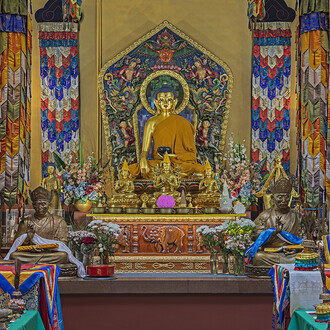The exhibition was opened by Mikhail Borisovich Piotrovsky, General Director of the State Hermitage, who said: “Today we are putting on show the book Jazz from the collection of the Hermitage. It is a marvellous book and placing it next to the halls of Matisse is highly appropriate. I casn say with confidence that the best halls of Matisse anywhere are in this building. There are no halls like them in any other museum in the world and Jazz is a wonderful supplement to them. Jazz, like Matisse himself, has long since become a classic, but, on the other hand, like Matisse himself, it retains its topical relevance.”
Work on the book began in 1943–44, when, at the suggestion of the art publisher Tériade, Henri Matisse produced a series of decoupages. He cut outline shapes from paper coloured with gouache and then assembled them into compositions, fastening the pieces with pins, drawing-pins or glue.
Jazz played a key role in Matisse’s late oeuvre. Decoupage became the artist’s favourite technique and in the late 1940s to a large extent replaced painting for him. Jazz has gone down in the history of the livre d’artiste as an ideal specimen of the genre, an example of how an artist can transform the book and the book can transform his own art.
The Hermitage’s copy of Jazz is one of twenty that were not destined for sale. In April 1948, Matisse presented it to his long-time assistant Lydia Delectorskaya, who had been directly involved in the work on the publication. On a blank page at the start of the book, he made a pencil portrait of Lydia. In the 1960s Delectorskaya presented the book to the Hermitage, adding several sketches by Matisse (designs for decorative vignettes and exercises in shaping certain elements of the text). This material makes the Hermitage’s copy unique and is evidence of the process of working on the manuscript of Jazz and its design.
The exhibition curators are Mikhail Balan, a researcher in the State Hermitage’s Department of Western European Fine Art, and Yulia Lukyanova, a junior researcher.
The opening of the exhibition was accompanied by live jazz music performed by the group Leningrad Dixieland conducted by Oleg Kuvaitsev with Vladimir Kozlov on double-bass, Dmitry Batrukhin on keyboards and Konstantin Kuvaitsev on percussion.
















